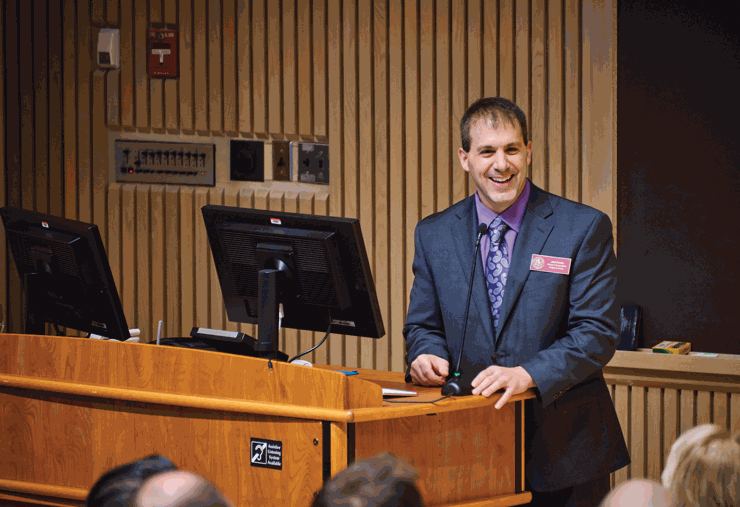Sustainability Column: How Does Colgate Get Its Energy?
Director of Sustainability John Pumilio spearheads Colgate’s renewable energy policies and implementation.
If you ever sit and ponder sustainability like I do in my spare time, you might think that clean energy and energy use reduction are some of the most important parts of sustainability, and you would be absolutely correct. Now, if you were to think about sustainability at Colgate, you might think to yourself “Pfft, Colgate doesn’t know what it’s doing—it doesn’t even have solar panels!” I’m here to explain to you why we don’t need solar panels at Colgate and how Colgate actually gets its energy.
As you all know, the weather at Colgate during the winter is pretty gloomy. While solar panels still work in cloudy weather, according to CleanTechnica, they are only 10-25 percent as effective on cloudy days as they are on sunny days.
But don’t worry, Colgate has not completely forsaken solar panels. The Colgate-owned 100 Broad Street house has 12 solar panels which they use to produce hot water for showering, using faucets and washing dishes. While 100 Broad still needs fuel oil to heat the building itself, overcast days produce enough energy to heat water for the building occupants’ needs. Overall, these solar panels eliminate almost 900 gallons of fuel oil and reduce Colgate’s carbon footprint by more than nine tons.
If you have ever been concerned about the lack of solar panels at Colgate, then you understand the importance of renewable energy in making a campus sustainable.
Colgate actually gets about 95 percent of its electricity from hydropower in New York State. Hydropower generates electricity by using water from rivers, which can be used over and over again. Colgate also uses a wood-fired boiler to satisfy over 26 percent of the university’s heating and hot water needs. The wood-fired boiler is considered renewable because it uses about 9,000 tons of locally and sustainably-harvested wood chips per year. In New York State, trees are such an abundant resource that using wood chips to power the boiler does not significantly reduce our forests.
The boiler is also considered to be carbon-neutral because the carbon it releases from burning the wood is “new” carbon. New carbon is carbon that has been introduced into the atmosphere relatively recently and has been cycled through plants, the atmosphere, and back again without increasing the carbon load because it has already been accounted for. Old carbon is carbon that has been stored for hundreds of millions of years in the ground and when released, only adds to the carbon load. This comes in the form of fossil fuels, plastics, any drilling done into the Earth, etc. Because this carbon hasn’t been part of the atmosphere in millions of years, it is unaccounted for and is significantly contributing to climate change by adding to current carbon levels.
“Renewable energy projects make us more resilient. We are not at the whim of increasing costs of fossil fuels, especially since there’s a lot of uncertainty and risk involved with them,” said John Pumilio, Director of Sustainability.
In addition to being cost efficient, renewable energy is also much better for the Earth and for reducing climate change because it reduces the burning of fossil fuels and the resource is not depleted after use like fossil fuels are.
Overall, Colgate gets about 36 percent of its energy from renewable and clean energy. Since the installment of its Climate Action Plan in 2009, Col- gate has reduced its overall electricity consumption by about two million kWh each year. Now, Colgate consumes about 30 million kWh of electricity each year and will continue to look for ways to reduce its consumption through new projects funded by the Green Revolving Loan Fund. The Green Revolving Loan Fund is a fund that gives money to various sustainable projects which, once carried out return, the saving they make from their sustainable features back to the fund.
So don’t worry about the lack of solar panels next time you’re strolling around campus—there is a river a few miles away that is doing all of the work for us. Instead, help Colgate by teaching yourself about other sustainable initiatives going on on campus and learn how you can get involved. Student interest in sustainability makes the Colgate administration more willing to prioritize sustainability and carry out bigger projects. Now that we’ve reached Carbon Neutrality, it’s time to turn our attention toward even bigger goals to continue to fight against climate change.
Contact Maggie Dunn at [email protected].





